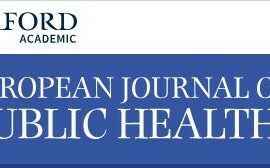
Kristiaan Proesmans, Sharon Hancart, Toon Braeye, Sofieke Klamer, Emmanuel Robesyn, Achille Djiena, Frances De Leeuw, Romain Mahieu, Alex Dreuw, Naima Hammami, Dirk Wildemeersch, Laura Cornelissen & Dieter Van Cauteren
Arch Public Health 80, 118 (2022). https://doi.org/10.1186/s13690-022-00875-6
Abstract
Background
Contact tracing is one of the main public health tools in the control of coronavirus disease 2019 (COVID-19). A centralized contact tracing system was developed in Belgium in 2020. We aim to evaluate the performance and describe the results, between January 01, 2021, and September 30, 2021. The characteristics of COVID-19 cases and the impact of COVID-19 vaccination on testing and tracing are also described.
Methods
We combined laboratory diagnostic test data (molecular and antigen test), vaccination data, and contact tracing data. A descriptive analysis was done to evaluate the performance of contact tracing and describe insights into the epidemiology of COVID-19 by contact tracing.
Results
Between January and September 2021, 555.181 COVID-19 cases were reported to the central contact center and 91% were contacted. The average delay between symptom onset and contact tracing initiation was around 5 days, of which 4 days corresponded to pre-testing delay. High-Risk Contacts (HRC) were reported by 49% of the contacted index cases. The mean number of reported HRC was 2.7. In total, 666.869 HRC were reported of which 91% were successfully contacted and 89% of these were tested at least once following the interview. The estimated average secondary attack rate (SAR) among the contacts of the COVID-19 cases who reported at least one contact, was 27% and was significantly higher among household HRC. The proportion of COVID-19 cases who were previously identified as HRC within the central system was 24%.
Conclusions
The contact-tracing system contacted more than 90% of the reported COVID-19 cases and their HRC. This proportion remained stable between January 1 2021 and September 30 2021 despite an increase in cases in March–April 2021. We report high SAR, indicating that through contact tracing a large number of infections were prospectively detected.
The system can be further improved by (1) reducing the delay between onset of illness and medical consultation (2) having more exhaustive reporting of HRC by the COVID-19 case.



